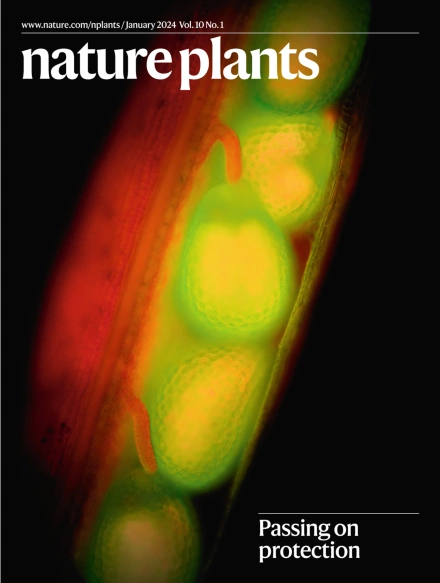Water availability positions auxin response maxima to determine plant regeneration fates
IF 13.6
1区 生物学
Q1 PLANT SCIENCES
引用次数: 0
Abstract
Wounding and hormones serve as diverse triggers for regeneration in animals and plants. Despite important advances in understanding various types of regeneration, the mechanism by which plants determine regeneration outcomes remains largely unknown. Here we demonstrate in Arabidopsis that a trade-off between two regeneration fates, wound-induced callus and root regeneration, was driven by distinct molecular pathways related to cambium and root development, respectively. We discovered that local water availability near the wound site determined the early stages of regeneration fates in Arabidopsis and tomato, with high water triggering root fate and low water initiating callus fate. Distinct spatial distributions of auxin response maxima around the wound, shaped by water availability, were critical for determining root or callus fates. We found that, by perturbing auxin response or auxin transport dynamics, we could change regeneration outcomes. Moreover, high water availability enhanced ethylene and jasmonic acid responses, whereas treatments with these hormones could modify auxin transport dynamics or the location of auxin response maxima, thus influencing regeneration fates. We propose that, through stress hormones, water availability modifies the auxin response distribution to control regeneration outcomes, thus allowing environmental control of regeneration and providing a means to improve in vitro regeneration by changing the water potential. This study reveals that water availability at the wound determines plant regeneration outcomes. High water availability induces root regeneration whereas low water availability triggers callus formation via stress hormones that shape auxin response maxima to activate distinct regeneration pathways.


水分有效性使生长素反应最大化,从而决定植物的再生命运。
伤害和激素是动物和植物再生的多种触发因素。尽管在了解各种类型的再生方面取得了重要进展,但植物决定再生结果的机制在很大程度上仍然未知。在拟南芥中,我们证明了伤口诱导的愈伤组织和根再生这两种再生命运之间的权衡,分别由与形成层和根发育相关的不同分子途径驱动。我们发现,拟南芥和番茄伤口附近的水分供应决定了其再生的早期命运,高水分触发根系命运,低水分触发愈伤组织命运。生长素响应最大值在伤口周围的明显空间分布,受水分有效性的影响,是决定根或愈伤组织命运的关键。我们发现,通过干扰生长素反应或生长素运输动力学,我们可以改变再生结果。此外,高水分利用率增强了乙烯和茉莉酸的响应,而这些激素的处理可以改变生长素运输动力学或生长素响应最大的位置,从而影响再生命运。我们认为,通过应激激素,水分可调节生长素反应分布,从而控制再生结果,从而实现再生的环境控制,并提供一种通过改变水势来改善体外再生的手段。
本文章由计算机程序翻译,如有差异,请以英文原文为准。
求助全文
约1分钟内获得全文
求助全文
来源期刊

Nature Plants
PLANT SCIENCES-
CiteScore
25.30
自引率
2.20%
发文量
196
期刊介绍:
Nature Plants is an online-only, monthly journal publishing the best research on plants — from their evolution, development, metabolism and environmental interactions to their societal significance.
 求助内容:
求助内容: 应助结果提醒方式:
应助结果提醒方式:


